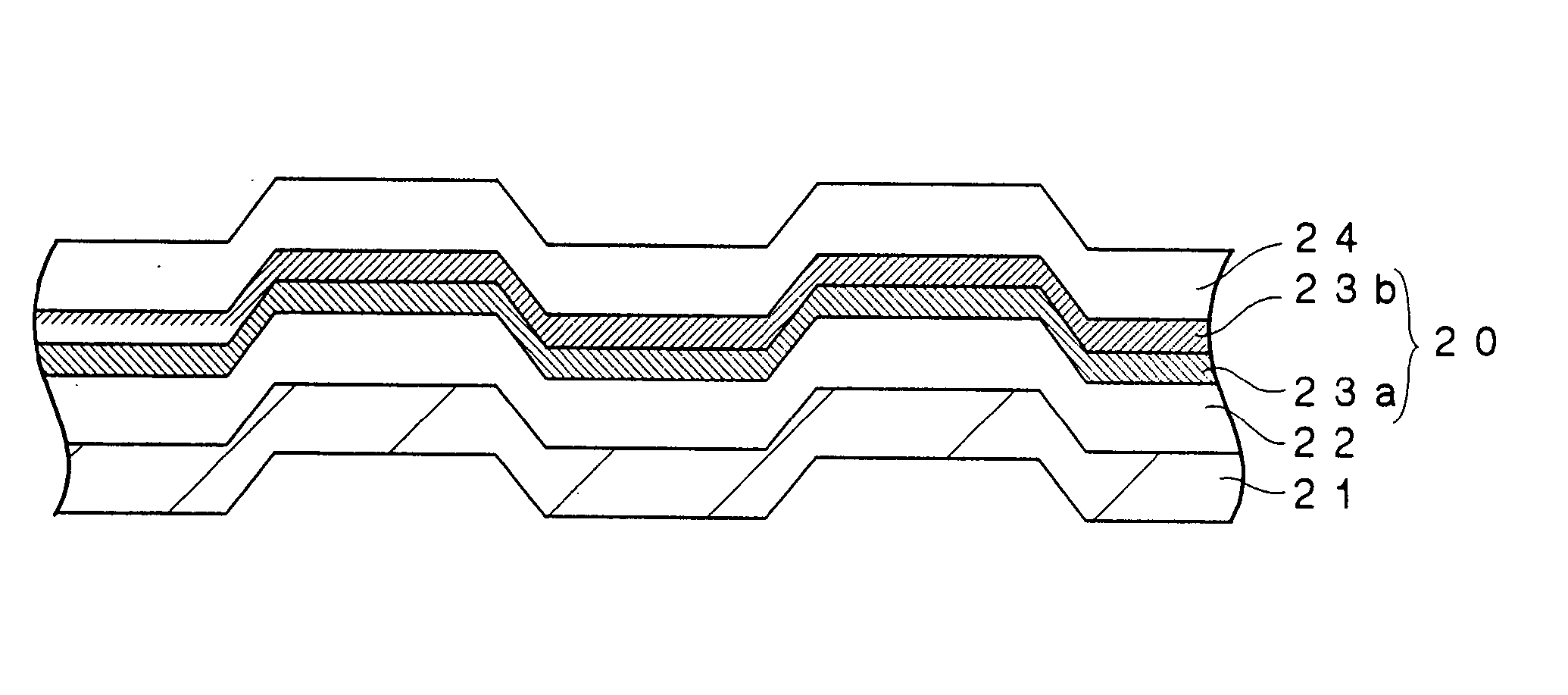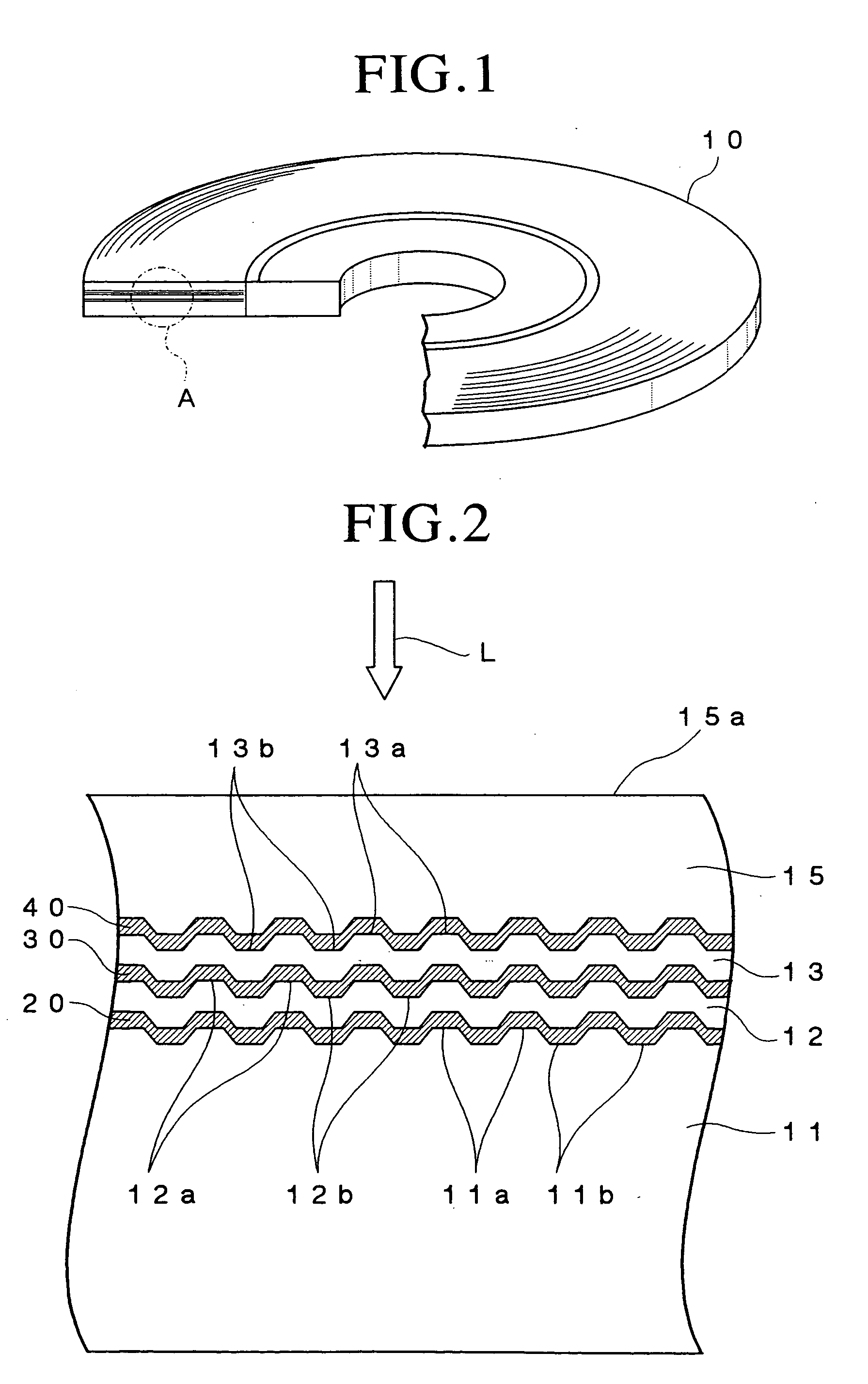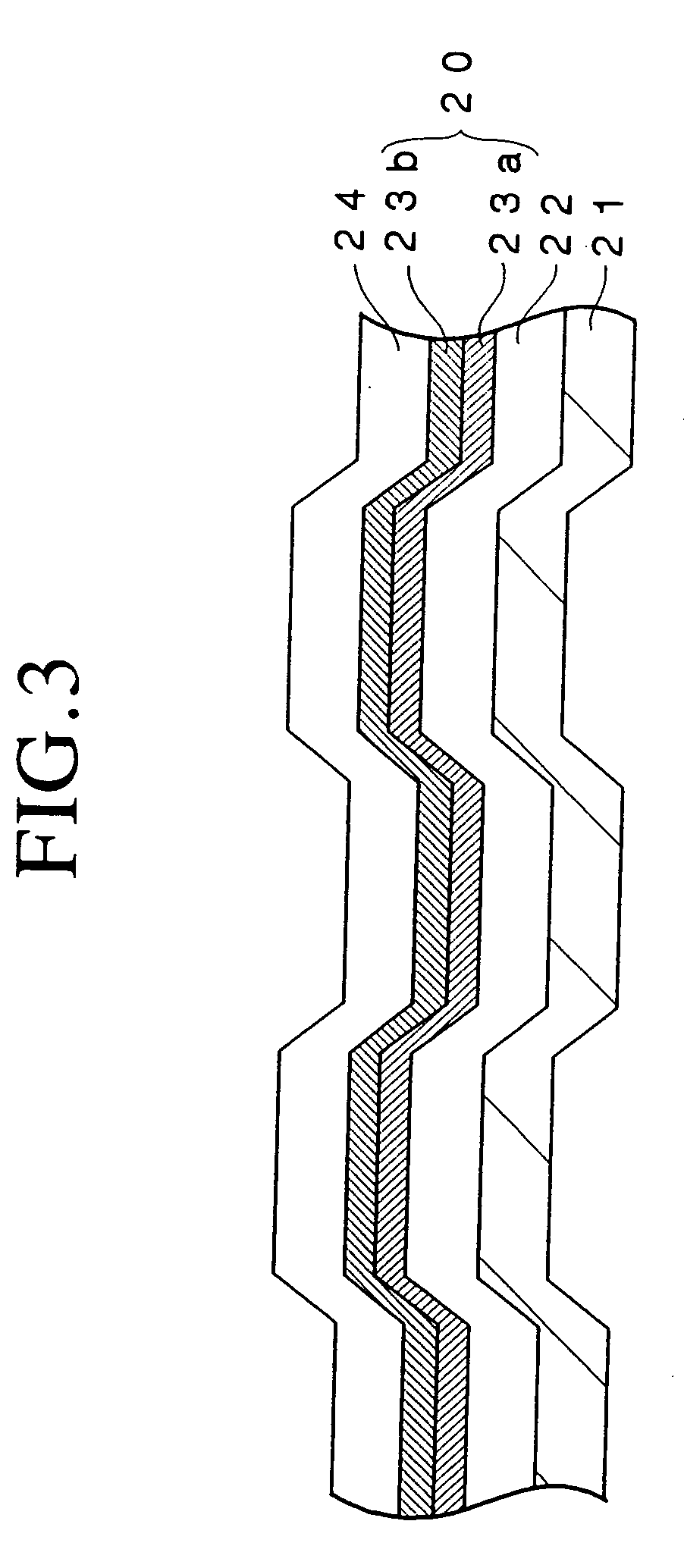Optical recording medium
a technology of optical recording medium and blank region, which is applied in the field of optical recording medium, can solve the problems of the difference between the region of the blank region where the record mark is formed and the region of the reflection coefficient where the blank region is sufficiently larg
- Summary
- Abstract
- Description
- Claims
- Application Information
AI Technical Summary
Benefits of technology
Problems solved by technology
Method used
Image
Examples
working example 2
[0246] A polycarbonate substrate having a thickness of 1.1 mm and a diameter of 120 mm was set on a sputtering apparatus and a recording layer having a thickness of 18 nm was formed on the polycarbonate substrate by the sputtering process using a mixture target consisting of the mixture of ZnS and SiO.sub.2 and a target consisting of Mg, thereby fabricating an optical recording disk sample #2.
[0247] The mole ratio of ZnS to SiO.sub.2 in the mixture of ZnS and SiO.sub.2 contained in the target was 80:20.
[0248] The composition of the recording layer of the optical recording disk sample #2 was measured similarly to in Working Example 1. It was found that the recording layer contained 21.5 atomic % of Zn, 10.1 atomic % of Si, 20.8 atomic % of Mg, 20.1 atomic % of O and 27.5 atomic % of S.
[0249] Then, a polycarbonate substrate having a thickness of 1.1 mm and a diameter of 120 mm was set on a sputtering apparatus and a recording layer having a thickness of 24 nm was formed on the polycar...
working example 3
[0258] An optical recording disk sample #5 was fabricated in the manner of the optical recording disk sample #1 except that when the second recording layer, the third recording layer and the fourth recording layer were formed using a target consisting of a mixture of La.sub.2O.sub.3, SiO.sub.2 and Si.sub.3N.sub.4 whose mole ratio was 20:30:50 instead of the target consisting of the mixture of ZnS and SiO.sub.2 was 80:20 so that the second recording layer had thickness of 28 nm, the third recording layer had a thickness of 18 nm and the fourth recording layer had a thickness of 15 nm.
[0259] The compositions of the second recording layer, the third recording layer and the fourth recording layer of the optical recording disk sample #5 were measured similarly to in Working Example 1. It was found that each of the second recording layer, the third recording layer and the fourth recording layer contained 6.2 atomic % of La, 24.1 atomic % of Si, 23.1 atomic % of Mg, 24.6 atomic % of O and ...
working example 1
[0263] The results of the measurement are shown in Table 3.
3 TABLE 3 reflection coefficient (%) fourth 3.6 recording layer third 4.8 recording layer second 4.3 recording layer first 3.3 recording layer
[0264] As shown in Table 3, the reflection coefficients of the first recording layer, the second recording layer, the third recording layer and the fourth recording layer of the optical recording disk sample #5 where no record mark was formed were 3.3%, 4.3%, 4.8% and 3.3%, respectively, and it was found that each of the reflection coefficients of the first recording layer, the second recording layer, the third recording layer and the fourth recording layer of the optical recording disk sample #5 was equal to or higher than 3.0% and sufficiently high.
[0265] Then, the fourth recording layer of the optical recording disk sample #5 was inspected similarly to in Working Example 1. Compounds of La and O were observed at the region of the fourth recording layer onto which the laser beam for ...
PUM
| Property | Measurement | Unit |
|---|---|---|
| thickness | aaaaa | aaaaa |
| thickness | aaaaa | aaaaa |
| wavelength | aaaaa | aaaaa |
Abstract
Description
Claims
Application Information
 Login to View More
Login to View More - R&D
- Intellectual Property
- Life Sciences
- Materials
- Tech Scout
- Unparalleled Data Quality
- Higher Quality Content
- 60% Fewer Hallucinations
Browse by: Latest US Patents, China's latest patents, Technical Efficacy Thesaurus, Application Domain, Technology Topic, Popular Technical Reports.
© 2025 PatSnap. All rights reserved.Legal|Privacy policy|Modern Slavery Act Transparency Statement|Sitemap|About US| Contact US: help@patsnap.com



